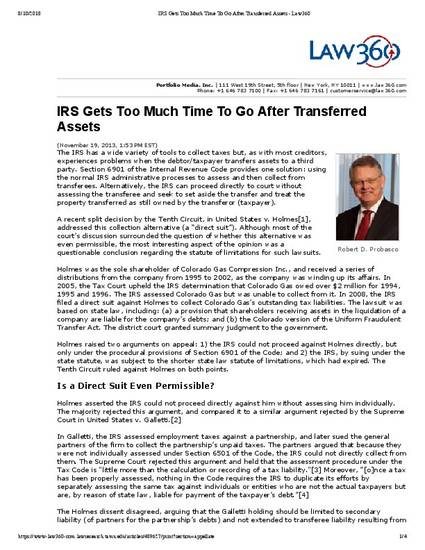
Article
IRS Gets Too Much Time To Go After Transferred Assets
Law360.com
(2013)
Abstract
The IRS has a wide variety of tools to collect taxes but, as with most creditors, experiences problems when the debtor/taxpayer transfers assets to a third party. Section 6901 of the Internal Revenue Code provides one solution: using the normal IRS administrative processes to assess and then collect from transferees. Alternatively, the IRS can proceed directly to court without assessing the transferee and seek to set aside the transfer and treat the property transferred as still owned by the transferor (taxpayer).
A recent split decision by the Tenth Circuit, in United States v. Holmes[1], addressed this collection alternative (a “direct suit”). Although most of the court’s discussion surrounded the question of whether this alternative was even permissible, the most interesting aspect of the opinion was a questionable conclusion regarding the statute of limitations for such lawsuits.
Disciplines
Publication Date
November 19, 2013
Citation Information
Robert D. Probasco. "IRS Gets Too Much Time To Go After Transferred Assets" Law360.com (2013) Available at: http://works.bepress.com/robert-probasco/19/
